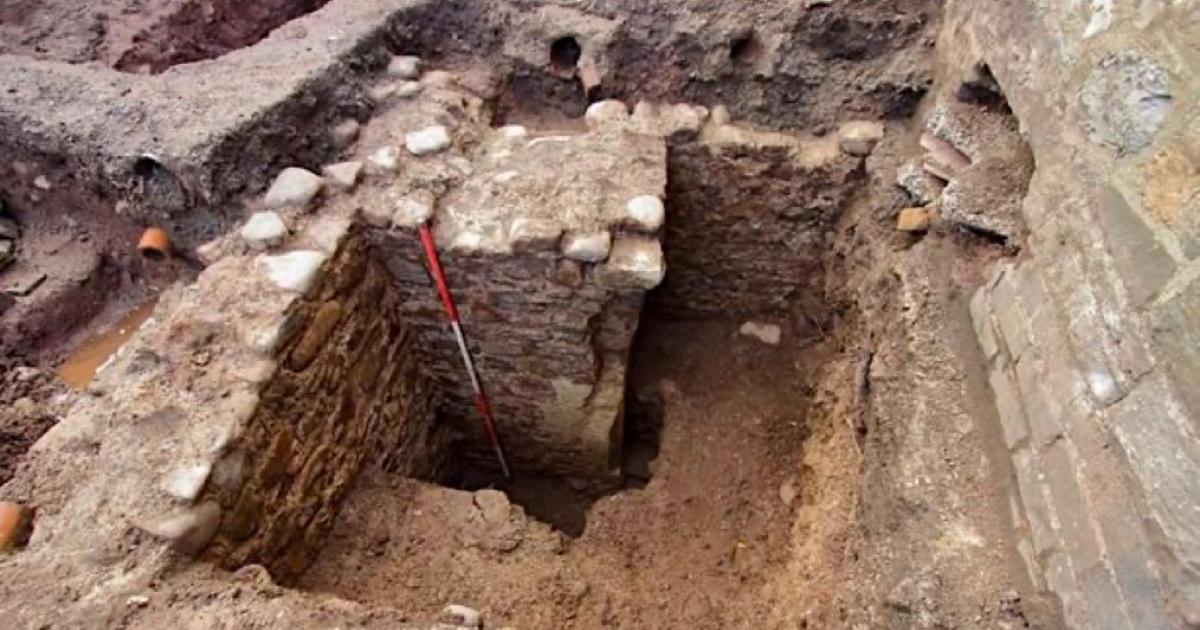
Grand Medieval Building Found Under Welsh Public Restrooms
An archaeological dig in Wales in the United Kingdom has made an amazing find under a derelict public restroom. They unearthed the site of a large and significant medieval building. The discovery is clearly important, but the nature and original use of the building is a mystery and is baffling researchers.
The find was made in Llandaff, in Cardiff, Wales. The building was unearthed during an excavation led by Professor Tim Young of Cardiff University. It was made “during an archaeological dig that involved 35 volunteers and more than 200 school children” reports the Daily Mail.
The site is adjacent to the ruins of Bishop’s Castle that dates to the Middle Ages. This was once the home of the Bishop of Cardiff and is near the historic Llandaff Cathedral.

The medieval building was discovered next to the Bishop's Palace. (Mike Peel / CC BY-SA 4.0)
Prestigious Medieval Building Discovered
The find was made under a public restroom that was built in the 1930s. Young told Wales Online “the site is known as the pound as it was the animal pound for Llandaff and we have evidence of that dating back to about 1607”.
The unearthing of the structure was a complete surprise because it is not indicated on any medieval maps of Cardiff. It is a very large building and is 33 feet (10 meters) long and was probably demolished after the Reformation.
- ‘Real Game of Thrones’ Story Is Told In This Interactive 15th Century Scroll
- Ruins of a Legendary Medieval Castle Uncovered in Scotland
- New Study Reveals that London was the Most Violent Place in Medieval England

Medieval map of the area where the medieval building was found. (Jason.nlw / Public Domain)
The BBC reports that archaeologists have said “the medieval building dates back to about 1450”. This was just before the start of the Wars of the Roses. It was once a two-story building but now only the ground floor remains and it was found in a relatively complete state.
A large number of artifacts were found including an almost 600 year-old fireplace, some earthenware floor tiles, animal bones, and a number of horseshoes. Perhaps the most striking artifact found was an engraved jetson coin, that was made in France, which was “used on abacus-like counting boards and as tokens in games” according to the Daily Mail.

French jetson, an accounting coin, was found hidden in the fireplace of the medieval building. (Llandaff 50+)
The Mystery of the Medieval Building
The dimensions of the dwelling and the nature of the materials found indicate that it was probably inhabited by a prominent member of the medieval Cardiff community. The fireplace was made of Bath Stone and this was very expensive and prestigious at the time.
Young told the Daily Mail that “the stone was not commonly used at the time, although it can be found at Llandaff Cathedral”. Only those with wealth could have afforded such a fireplace.
Despite the finds, the house is something of a mystery. No evidence has been found to indicate the identity of those who resided in the building. There are a number of theories regarding those who once inhabited what once may have been one of the most impressive buildings in Late Medieval Cardiff.
Was the Medieval Building the Home of a High-Status Citizen?
The Herald Planet reports that “experts believe that the building may have once been the home of an important resident of Cardiff – perhaps for an official at the neighboring Llandaff Cathedral”. It has also been speculated that because it was located adjacent to the old Bishop’s Palace that the person served the bishop in some way.

This image shows the walls of the medieval building, with the toilets to the right and the Bishop's Castle gatehouse beyond. (Llandaff 50+)
In medieval Cardiff the “bishops at that time held manorial rights”, the Daily Mail quotes Dr. Young. This meant that the prelate had feudal and legal rights over the area in Cardiff and would have ruled it largely independent of the civic authorities. The mysterious house may have been the residence of one of his officials.
Further investigations are going to be undertaken to identify who inhabited the house, then the location will be covered up.
The BBC reports that it will “make way for the construction of a new community venue set up by Llandaff 50+, a charity promoting social inclusion among the over 50s in the local community”. The discovery has helped researchers to better understand the topography of medieval Cardiff and also the structure of urban society in the 1400s.
Top image: South corner of the medieval building, with its fireplace to the right. Source: Llandaff 50+.
By Ed Whelan















